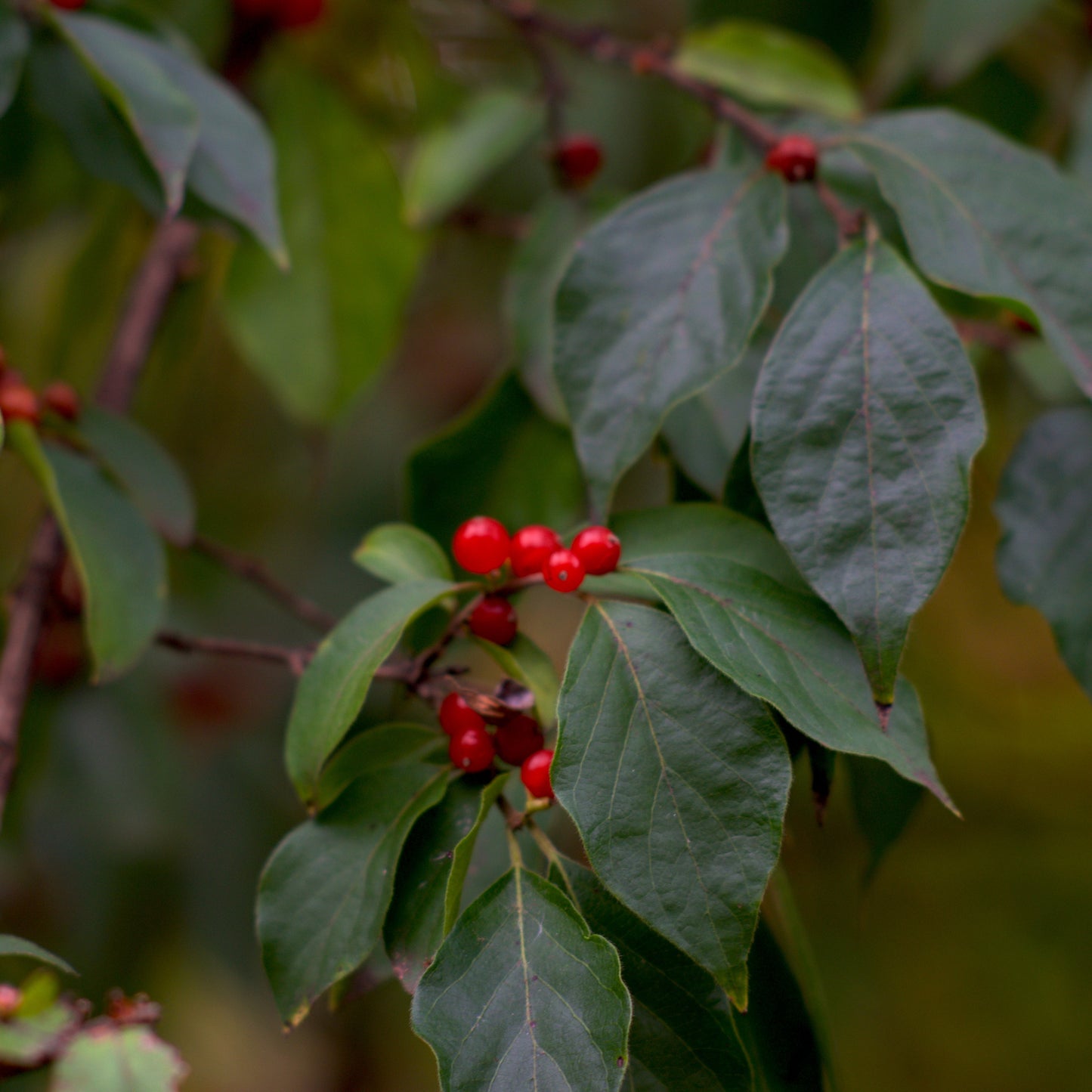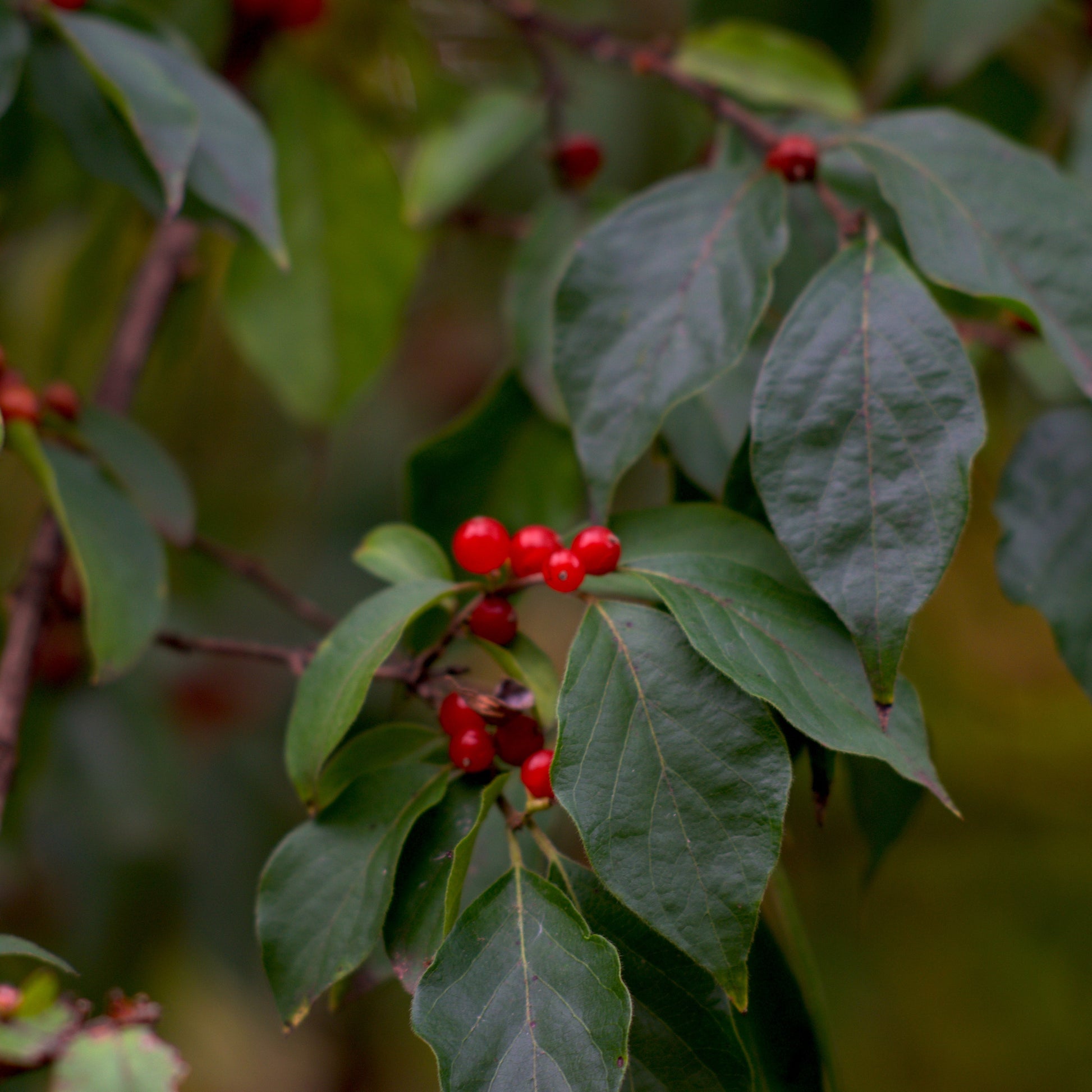Limited Quantities - Reserve Now For Fall
Winterberry Holly Shrub
Winterberry Holly Shrub
Couldn't load pickup availability
Ilex verticillata
Winterberry Holly
Winterberry Holly is a standout native shrub prized for its vibrant red berries that brighten winter landscapes long after leaves fall. Unlike most hollies, it's deciduous—shedding its leaves in fall to reveal stunning berry-covered branches that persist into winter, providing critical food for birds.
Perfect for rain gardens, wildlife plantings, and seasonal interest borders, Winterberry thrives in wet soils and cold climates, offering striking beauty with minimal upkeep.
Winterberry Holly Overview
|
Attribute |
Details |
|
🌿 Botanical Name |
Ilex verticillata |
|
🏷️ Common Names |
Winterberry Holly, Black Alder |
|
🌳 Mature Height |
6–10 feet |
|
🌐 Mature Width |
4–8 feet |
|
📈 Growth Rate |
Moderate (12–24 inches per year) |
|
⏳ Lifespan |
40–50+ years |
|
🧊 USDA Zones |
3–9 |
|
❄️ Chill Hours |
800–1,200 hours |
|
☀️ Sun Preference |
Full sun to partial shade |
|
🧱 Soil Type |
Moist to wet loam, clay, or sandy soils |
|
⚖️ Soil pH |
Acidic to neutral (4.5–6.5) |
|
💧 Water Needs |
High; thrives in wet or boggy sites |
|
🌸 Flower Color |
Small white-green blooms; early summer |
|
🍒 Fruit Type |
Bright red berries (female plants only) |
|
🐝 Pollinators |
Attracts bees, native flies, and wasps |
|
🌿 Growth Habit |
Upright, multi-stemmed, suckering shrub |
|
↔️ Spacing |
4–6 ft apart for hedging or group plantings |
|
🏡 Landscape Uses |
Rain gardens, winter focal points, bird gardens |
|
🧹 Maintenance Level |
Low once established |
Environmental Benefits
🌸 Supports native pollinators with nectar-rich flowers
🍒 Provides crucial winter food for songbirds and wildlife
🌧️ Excellent for stormwater management and erosion control
🌿 Native species that enhances biodiversity and habitat
Pros & Cons
|
✅ Pros |
⚠️ Cons |
|
🍒 Spectacular winter berries for months of color |
♀️ Requires both male & female plants for fruit set |
|
🐦 Attracts and feeds wintering birds |
🐛 Susceptible to leaf miners and scale insects |
|
🌧️ Thrives in wet, boggy, or clay-heavy soils |
🌱 May sucker and spread in ideal conditions |
|
🧬 Cold hardy and native to eastern North America |
🌿 Deciduous—not evergreen like other hollies |
|
🎯 Perfect for massing, hedging, or specimen planting |
☀️ Best berry production in full sun |
Planting & Care Guide
🛁 Water thoroughly before planting and during dry spells
🕳️ Plant at soil line in well-prepared, moist soil
🌾 Mulch with 2–3 inches to conserve moisture and suppress weeds
💦 Keep soil consistently moist during establishment
✂️ Prune in late winter or early spring before new growth
🧪 Apply acidic organic fertilizer in early spring if needed
♂️ Remember to plant a male variety nearby for pollination (1 male for every 5–7 females)
Winterberry Holly is a show-stopping native shrub that brings life and color to even the coldest months. Its brilliant berries, low-maintenance needs, and ecological value make it a smart choice for gardeners seeking beauty and biodiversity all year round.
Share


